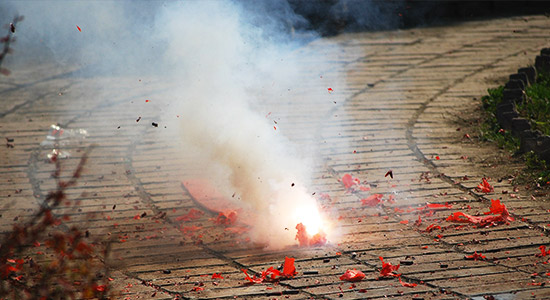.gif)
.gif)

Kolkata is currently facing a significant air quality crisis, with the Air Quality Index (AQI) recorded above 300 in multiple areas, categorizing the air as "hazardous." Following the Diwali and Kali Puja celebrations, fine particulate matter (PM 2.5) levels have surged, reaching alarming concentrations of up to 500 micrograms per cubic meter in regions such as Bhowanipore, Bidhannagar, and Howrah. The Central Pollution Control Board's data has documented these detrimental effects, with particular emphasis on the correlation between firecracker usage during the festive season and declining air quality.
In response to the worsening air conditions, Kolkata Police have heightened their enforcement of the existing ban on high-decibel firecrackers. Over the past two days, a total of 601 individuals have been arrested for various violations, with 265 specifically detained for using prohibited firecrackers. Law enforcement has reported significant incidents of noise pollution, particularly in neighborhoods like Ballygunge Circular Road, Behala, and Tollygunge, where sound levels exceeded the permissible limit of 75 decibels. These activities have raised public health concerns, especially given the proximity of residential areas to major roadways and commercial zones where firecracker use has been prevalent.
Health experts warn that PM 2.5 levels exceeding 400 micrograms per cubic meter pose severe health risks, particularly for vulnerable populations such as children, the elderly, and individuals with pre-existing respiratory conditions. The pollutants can lead to a range of health issues, including asthma, bronchitis, and other chronic respiratory diseases. Moreover, the impact is not limited to Kolkata; neighboring regions, including parts of Delhi, have reported similar spikes in PM 2.5 levels, reflecting a broader regional issue of air quality exacerbated by seasonal festivities and increased firecracker usage.
Meteorologists note that air quality in Kolkata typically deteriorates during the Kali Puja and Diwali periods, with elevated levels of pollution continuing into the winter months. Currently, the regional meteorological department has indicated that dry weather conditions are expected to persist in South Bengal, reducing the likelihood of rain that typically helps mitigate pollution levels. While some forecasts suggest the possibility of sporadic rainfall in certain districts of North Bengal over the next few days, the overall weather pattern suggests that relief from the pollution crisis may not be imminent. Local authorities are urging residents to take precautions, especially during periods of high pollution, to protect their health and well-being.